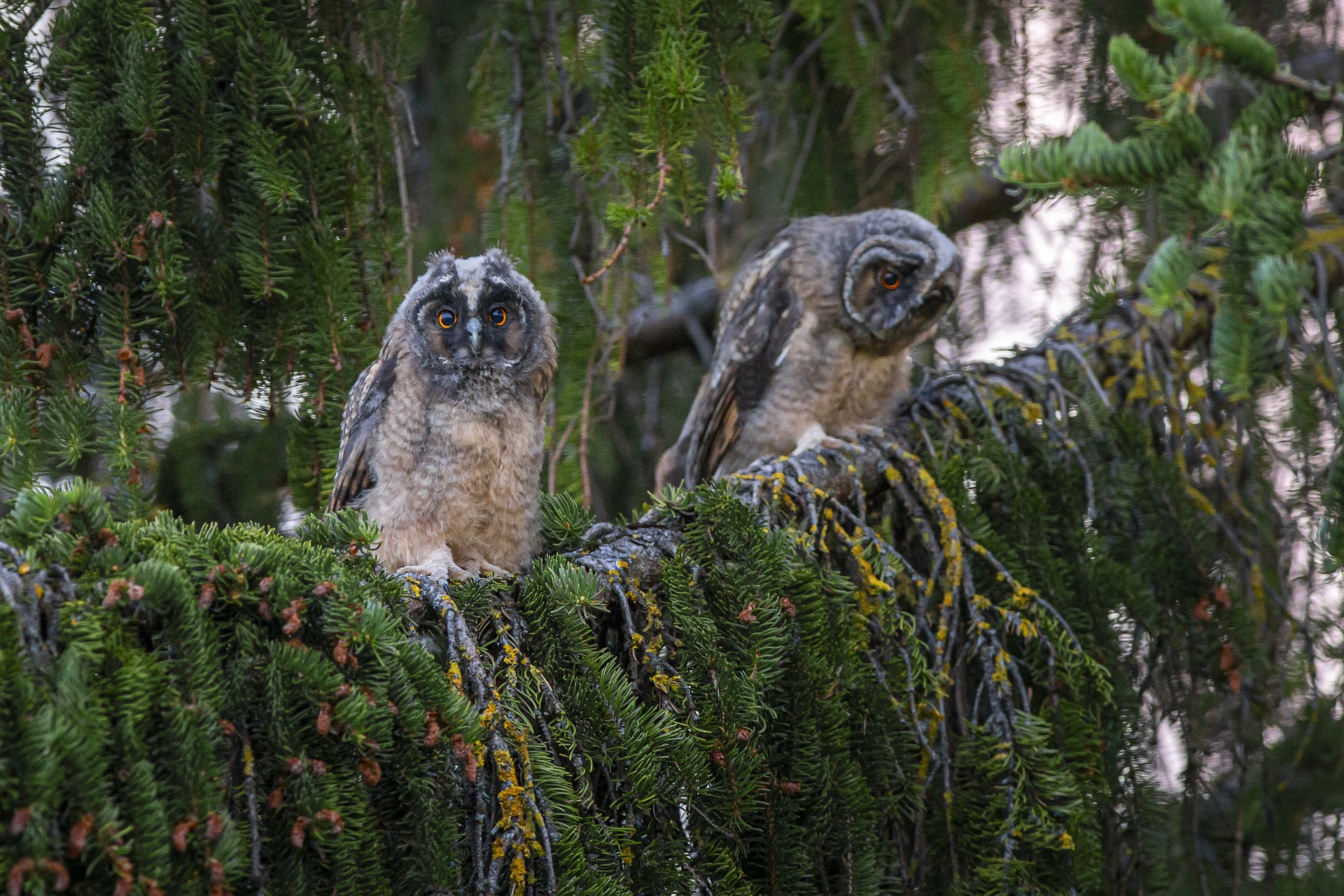The Long-eared Owl (Asio otus) is a medium-sized owl species belonging to the family Strigidae. Here are some key features and characteristics of the Long-eared Owl:
- Appearance: As the name suggests, Long-eared Owls have prominent “ear” tufts on their heads, which are actually feather tufts and not ears. They have a relatively slim body with mottled brown plumage, providing excellent camouflage against tree bark and foliage. Their facial disk is relatively small compared to some other owl species.
- Size: Long-eared Owls typically measure around 13 to 16 inches (33 to 40 centimeters) in length, with a wingspan of about 35 to 39 inches (88 to 98 centimeters). They are medium-sized owls, slightly smaller than the Great Horned Owl.
- Habitat: Long-eared Owls inhabit a variety of woodland and forested habitats, including deciduous forests, coniferous forests, mixed woodlands, and wooded river valleys. They are also found in scrublands, marshes, and agricultural areas with suitable vegetation for roosting and nesting.
- Distribution: Long-eared Owls have a widespread distribution across much of North America, Europe, Asia, and parts of North Africa. They are migratory birds in some regions, with northern populations often migrating southward during the winter months.
- Nocturnal Behavior: Like most owl species, Long-eared Owls are primarily nocturnal, meaning they are most active during the night. They hunt small mammals such as mice, voles, and shrews, as well as small birds and insects. They use their keen hearing and excellent low-light vision to locate and capture prey.
- Nesting and Breeding: Long-eared Owls typically nest in dense vegetation or in the abandoned nests of other birds, such as crows or hawks. They lay eggs in early spring, with clutch sizes typically ranging from 4 to 6 eggs. Both parents participate in incubating the eggs and caring for the young.
- Conservation: While Long-eared Owls are not currently considered globally threatened, they may face threats from habitat loss, disturbance, and pesticide use in agricultural areas. Conservation efforts aimed at preserving their forested habitats and minimizing human disturbance are important for their long-term survival.
Overall, the Long-eared Owl is a captivating and enigmatic species, known for its distinctive appearance and nocturnal habits. It plays an important role in controlling rodent populations and maintaining the health of forest ecosystems.
Visited 420 times, 9 visit(s) today
Views: 471
Subscribe to the newsletter:
